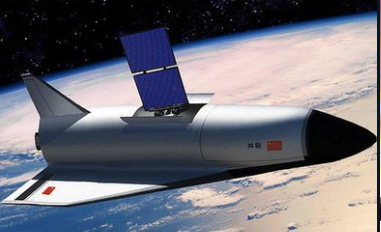China’s experimental reusable spaceplane successfully completed its third orbital mission, returning to Earth late on Thursday. State media confirmed the spacecraft’s landing but provided no images or details regarding its landing site. The mission, which began on December 14, 2023, was launched from the Jiuquan spaceport aboard a Long March 2F rocket. This marked the spaceplane’s third flight, similar in duration to its second mission, lasting 267 days.
HELSINKI — China’s experimental reusable spaceplane returned to Earth late Thursday, completing its third orbital mission.#China #ChinaSciencehttps://t.co/ip2pzeZ2XJ
— chinaspotlight (@chinaspotlight1) September 6, 2024
The spacecraft is thought to be analogous to the U.S. X-37B spaceplane, highlighting China’s progress in reusable space technologies. Experts believe this development will pave the way for more efficient and cost-effective space travel in the future. Astrophysicist Jonathan McDowell estimated that the spacecraft likely landed in the Lop Nur region of northwestern China.
Throughout its missions, the spaceplane has conducted rendezvous and proximity operations (RPO) with small satellites, suggesting a potential for satellite retrieval or maintenance. Such operations could also have implications for counterspace activities. Despite the secrecy surrounding the project, China has emphasized that the spaceplane is designed for reusable technology verification and space science experiments, aligning with its broader efforts to enhance access to space and advance reusable spaceflight systems.
BREAKING: China’s highly secretive reusable spaceplane quietly lands… https://t.co/Ji02NR5eck #chinaspave #chinanews @jayi_wang @DragonWong2024 pic.twitter.com/odhf4pUQDb
— POV (@PointOrView) September 7, 2024
The spaceplane’s development is part of a larger initiative by the China Aerospace Science and Technology Corporation (CASC) to build a fully reusable, two-stage-to-orbit (TSTO) space transportation system. CASC’s spaceplane project has received national funding, signaling China’s long-term commitment to reusable space technologies. The progress on reusability could become clearer as more flights are conducted and evaluated.
Key Points:
i. China’s reusable spaceplane successfully completed its third orbital mission, landing after 267 days in space.
ii. The spacecraft was launched from Jiuquan spaceport on December 14, 2023, aboard a Long March 2F rocket.
iii. The mission involved rendezvous and proximity operations (RPO) with small satellites, indicating potential applications in satellite maintenance or counterspace operations.
iv. China has emphasized the spacecraft’s role in reusable technology verification and space science experiments.
v. The project is part of a broader initiative by China to develop reusable spaceflight systems, funded by the National Science Foundation of China.
Kirk Volo – Reprinted with permission of Whatfinger News


